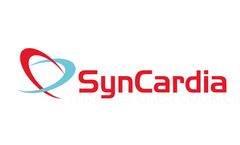Defibrillator Icd Articles & Analysis
5 articles found
Ischaemic heart diseases continue to be a major global health concern and a leading cause of death. To develop more effective treatments, it is essential for researchers to work with animal models that closely replicate human cardiac physiology. In a notable step forward, Pius et al. present a refined, minimally invasive ovine model of ischaemia–reperfusion–infarction which ...
NewPace develops and patented the Implantable Subcutaneous String Defibrillator (ISSD™) which is the first, completely unitary and flexible, rechargeable, lifesaving implanted defibrillator. Its innovative, minimally invasive, shape introduces a new dimension in subcutaneous cardioverter ...
Click the links below to learn more about a specific condition: Atrial Septal Defect (ASD) Aortic Valve Stenosis (AVS) Coarctation of the Aorta (CoA) Complete Atrioventricular Canal defect (CAVC) d-Transposition of the Great Arteries Ebstein’s Anomaly Hypoplastic Left Heart Syndrome Interrupted Aortic Arch I-Transposition of the Great Arteries Patent Ductus Arteriosus (PDA) ...
For patients who are at high risk of SCA (such as post-heart attack patients with low heart functionality), the ‘gold standard’ of care is the use of an implantable cardioverter defibrillator (ICD). Currently, there are two types of ICD devices on the market: transvenous ICD (TV-ICD) and subcutaneous ...
May 16, 2017 – A new study examines the effectiveness of the implantable subcutaneous string defibrillator (ISSD), a flexible, string-shaped and first-ever rechargeable implantable cardioverter-defibrillator (ICD). ...



